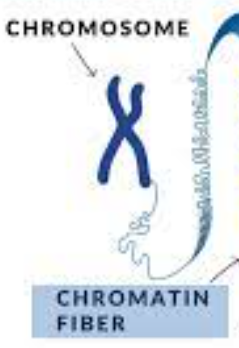Omnis Cellula e cellula.
This statement from a man named Rudolf Virchow changed the entire outlook of biology and how organisms funtion. How our body functions.
This statement must have clearly baffled your brain, more likely to think it as gibberish. But don't worry. If your brain declares this as Greek and Latin, congratulate it, as it is right. Ironically it is Latin. It basically means:-
"Every new cell arises from old ones"
And in this blog, we will see how this german scientist 's Latin statement shook the Biology world in English. 😜
But before we begin, we need to learn the meanings of few basic terms which will be repeated throughout the blog

1) Chromosomes :- These are the cell organelles which contain the genetic material.
2) Chromatin :- This is the network inside the cell nucleus which contains the DNA material. The chromatin network condenses to form Chromosomes when dividing.
3) Centromere and sister chromatids :- After the DNA replication in the cell, each chromosome contains an identical pair, this is called the sister chromatid. Each pair of sister chromatid is held togther with a centromere. ( shown in figure.2)
figure.2
4) Centrioles :- They are a barrel-shaped organelle found in the cell, plays a important role in the spindle formation process ( which will be highlighted later on)
Now, lets begin
The Major subtopics in the process of cell division are :-
1) Interphase - which include the G1, S and G2 phase
2) M Phase - also known as the division phase, this further consists of Karyokinesis ( division of the nucleus) and Cytokinesis ( division of the cytoplasm)
Interphase :-
In the Interphase , first the cell goes through a period of intense growth and biochemical activity. This is known as the G1 (Gap 1 ) phase.
In the S phase synthesis ( S stands for synthesis) or replication of DNA occurs, this is where the sister chromatids formation begins.
In the G2 ( Gap 2) the cell continues to grow and complete its preparation for cell division
M Phase:- ( Where the fun begins 😋)
This is divided into 4 divisions:- Prophase, Metaphase, Anaphase and Telophase
* PROPHASE:-
This is the longest phase in the division ( Quoting Richard Paul Evans :- The First step of a journey is always the longest. Guess what? This holds true for Biology too!)
The Chromatin in the nucleus starts condensing, and the Centrioles start moving to the opposite poles of the cell.
The Centrioles forms Aster fibre and spindle fibres. The spindle fibres attaches to the centromere of the chromosomes.
Cell Organelles become invisible as masked by nucleoplasmic contents. In the late prophase nuclear membrane disappears.
*METAPHASE:-
Chromatin condensation completes resulting in chromosomes
The Chromosomes are pulled to the equitorial plane of the cell, hence all the chromosomes are alligned at the equitorial plane
Each chromosome's centromere is occupied by the spindle fibres from both the poles. ( 2 centrioles from each pole send in their spindle fibres)(To get a clear picture of what a spindle fibre and aster fibre is look at the image in the left )
*ANAPHASE:-
Sister chromatids separate by the splitting of centromere due to pulling of spindle fibre from both the end poles ( Biological sized Tug of war)
Sister chromatids move towards the opposite pole
*TELOPHASE:- ( Opposite of Prophase)
Sister Chromatids reach the opposite poles, and the nuclear membrane reappears on both the ends.
Chromosomes decondenses, resulting in Chromatin again
These chromatin network are bound by nuclear membrane , so 2 nuclei are formed
Cell Organelles become visible
Cytokinesis:- Results in the division of cytoplasm
In Animal cell, the cytokinesis occurs due to furrowing in, or commonly known as pinching in
And there you have it, Two new cells!
This is how the cell divides in somatic cells, or basically non-reproductive cells. This process occurs throughout our life, every moment, every day. Phew, the amount of work has to go through to just keep us alive!
There is another process which occurs in reproductive cells, known as Meiosis, which we will discuss in yet another blog, So keep your eyes peeled for more Biology blogs.



Comments
Post a Comment